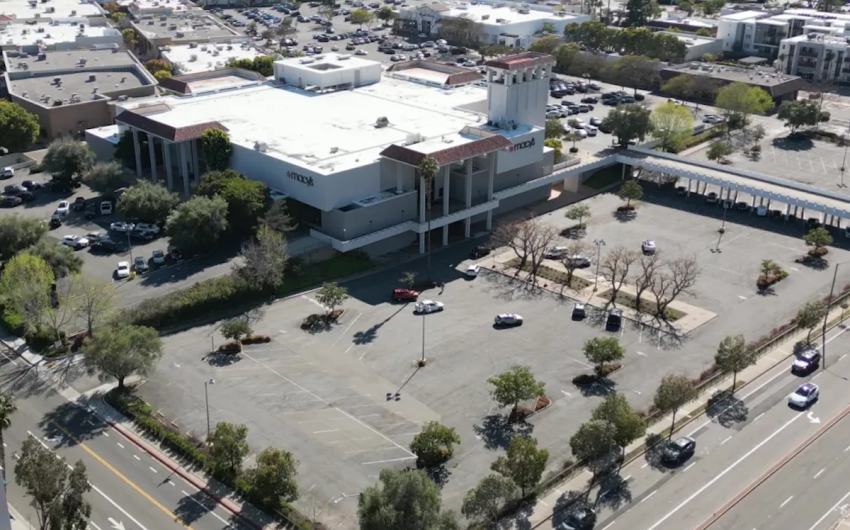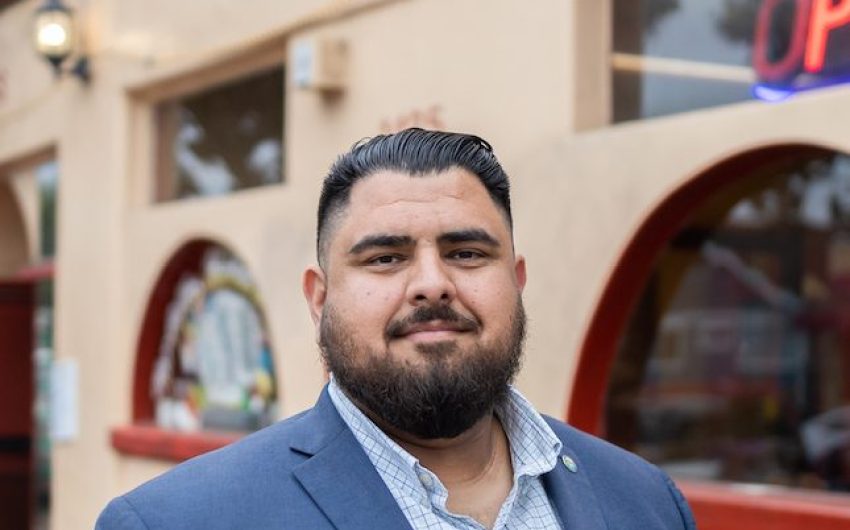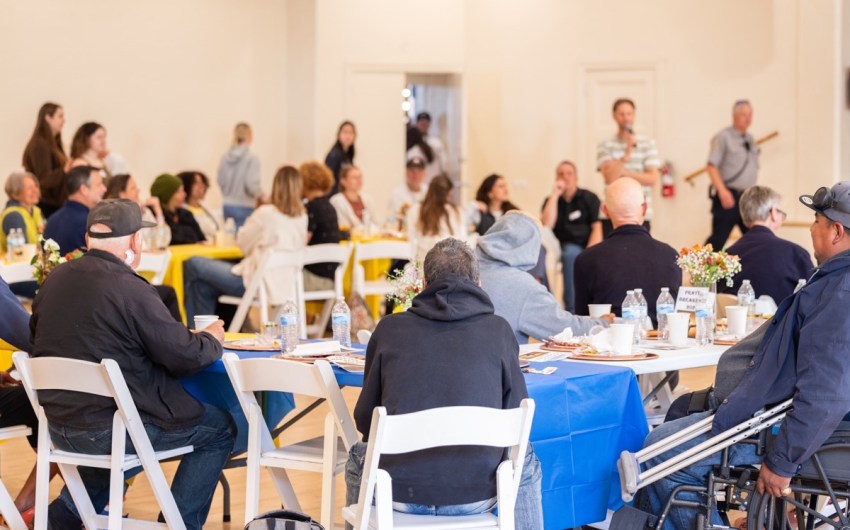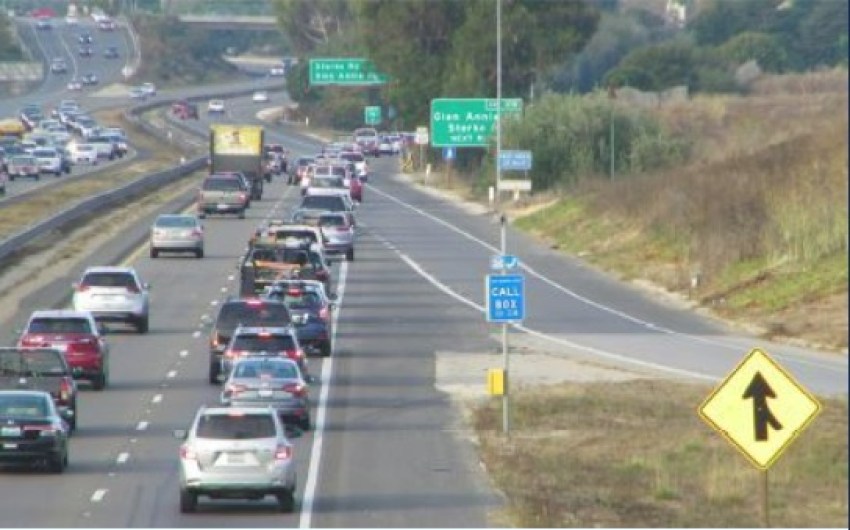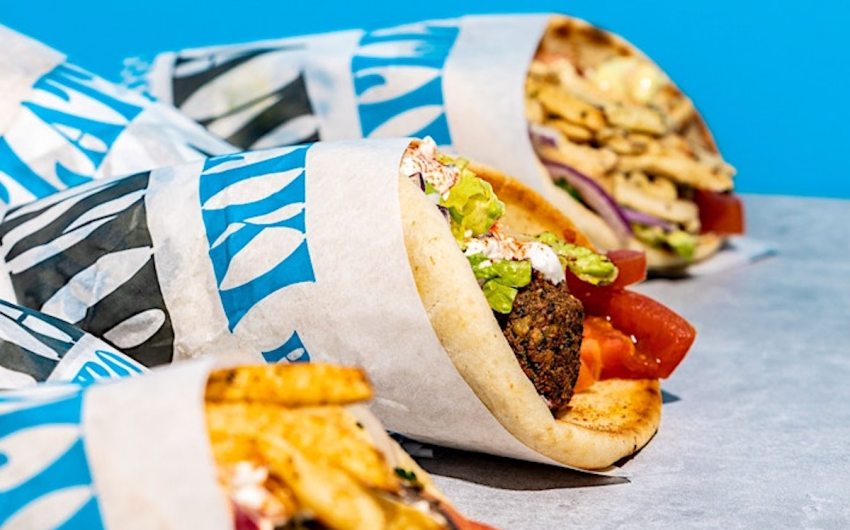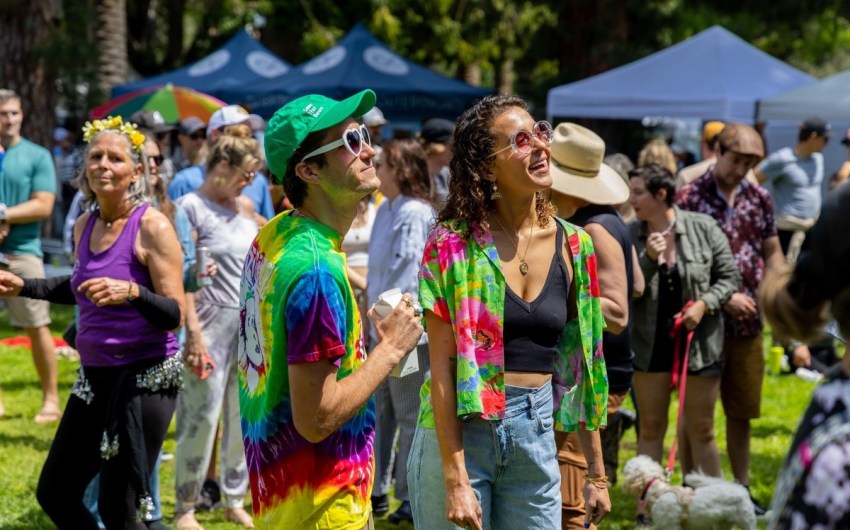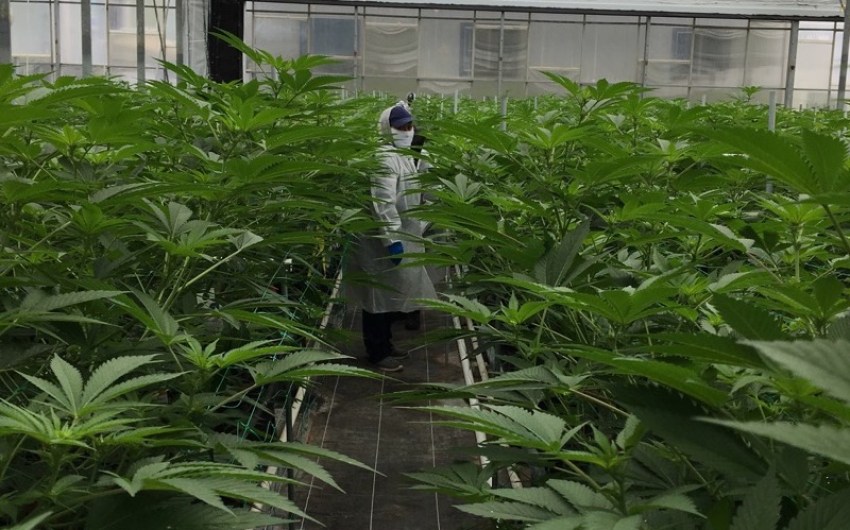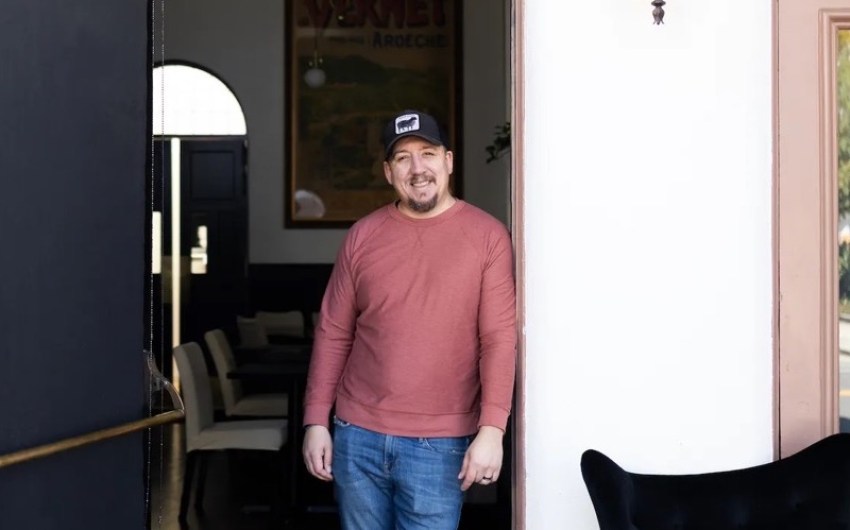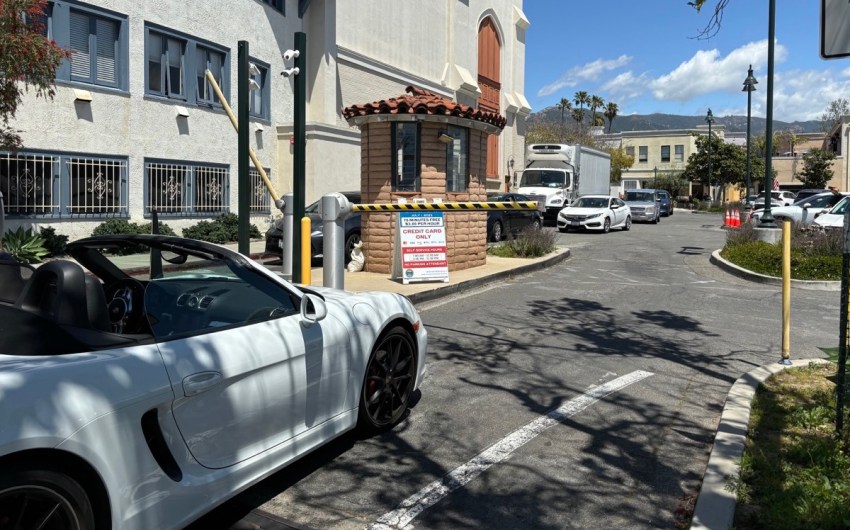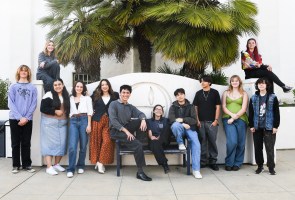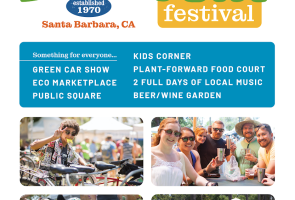Poodle Hit by Car and Tells the Tale
Riding Bikes Isn’t for Sissies; It’s for Everyone
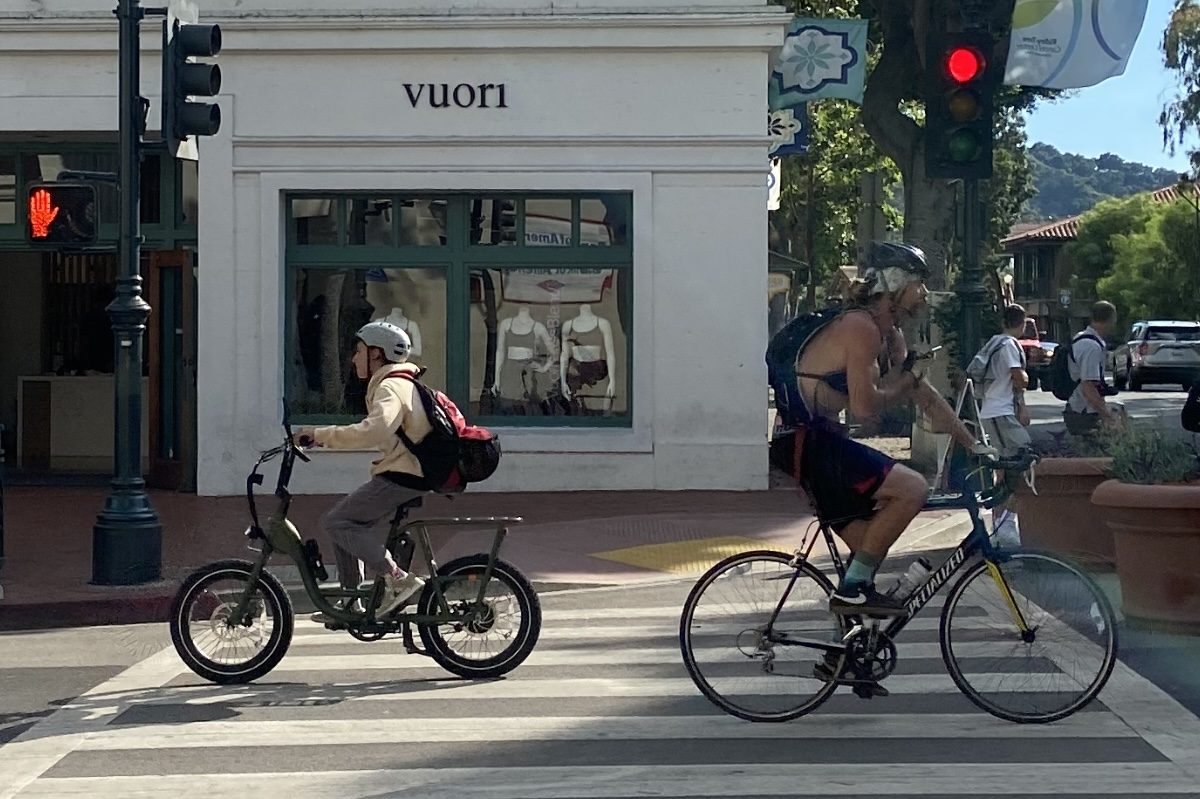
PEDAL TO THE METTLE: As accidents went, it was more scary than hairy. In other words, I got off easy.
It was a rainy Friday morning about a month ago; I was riding my bike down Anacapa Street on my way to an interview. I can’t say with any reliability what happened. As I went into the Arrellaga Street intersection, I noticed a car about to crash into me from the side. My life didn’t flash in front of my eyes; old movies did. My most vivid recollection is that of the shark from Jaws; it was lunging out of the water to bite my ass. I thought I could squirt past; I couldn’t. The front end of the car clipped my rear wheel. I went down.
Luckily, the street was wet; I slid rather than scraped. Luckily, neither of us were going fast. In the vainglory of my imagination, I executed an impeccable Hollywood roll, bounced up, ascertained I was fine, and then magnanimously calmed down the driver. I was not mad. Or even upset. In actual fact, I felt nothing at all. I was late for the interview. I needed a ride. The driver — frantic, worried, and extremely helpful — obliged. Later, I would discover an elbow bleeding, a thigh bruised. My bike would need a new wheel.
I was lucky. After commuting by bike for more than half a century, this was the first time my bike and a car sought to occupy the same space at the same time. By some fatalistic calculus, I was overdue. “Pay attention, idiot,” the universe growled. “Get your head out of your head.”
Not everyone is lucky enough to walk away.
I would later find out there have been 190 bike crashes reported every year for the past five years in Santa Barbara County; two a year resulted in death. I would also learn that official statistics typically account for only 20 percent of the crashes.
I found all this out from Dr. Trisalyn Nelson, head of UCSB’s Geography Department, a card-carrying sprocket-head and certified map-wonk. Last week, Nelson was the featured speaker at a bike nerd summit — held at the downtown digs of the Community Environmental Council — on bicycle safety and new mapping strategies to track crashes and near-misses alike using geographic information system (GIS) data points and crowd-sourcing.
Nelson is emerging as a force multiplier within the bike activist universe. She cut her teeth in Canada using GIS coordinates to map trees and grizzly bears. An avid bike rider, she became convinced she would die a stupid death at the hands of a distracted driver at a certain intersection in Vancouver. Combining existential defiance with scholarly research, she created a website dubbed, “Flip the Bird.” That has since morphed into her current project to track local bike safety data on BikeMaps.Org.
In the site’s short incarnation, Nelson and crew have tracked 300 additional points of darkness throughout Santa Barbara County. My point of darkness has yet to be entered.
Nelson and I start from the same premise: There’s no mode of transportation on the planet remotely so utilitarian, kind to the body, kind to the wallet, kind to the environment, and so irresistibly joyous as the bicycle. Given our climate and urban grid, Santa Barbara should be the world’s most bicycle-friendly community. Instead, places like Copenhagen — famous for being cold and wet — are eating our lunch.
The difference is not one of character so much as infrastructure. If you want people to ride, bicycles must be designed into the fabric of the infrastructure, not included as some green-striped afterthought. But none of this is cheap; much comes at considerable inconvenience to the automobile. Much of the data we rely on is either nonexistent or out-of-date. How do we know the safest routes to take or where new infrastructure is most urgently needed, or what would actually make a difference?
There’s that old saw: If you can’t measure it, you can’t fix it. At the risk of sounding paranoid, if you don’t really want to fix it, maybe you don’t get around to measuring it.
Nelson is no eat-your-spinach activist. Playful, smart, and enthusiastic, she bubbles over with interesting, fun, and weird factoids. Wednesday morning at 9 a.m., for example, is the time Santa Barbara has the most cyclists on the road. Why 9 a.m.? Why Wednesday? And the stretch of State Street by Chick-fil-A is the single most dangerous place to ride in Santa Barbara. Politics aside, I never got the appeal of Chick-fil-A. But there are some questions that not even the best data can answer.
Back in 2016, Nelson remembers first being asked about e-bike ridership. She remembers saying, “This is never going to be a thing.” Guess what — according to manual counts conducted over 20 hours at six sites, 50 percent of bikes on the road in Santa Barbara are now e-bikes. Of those, nearly 10 percent are part of BCycle’s fleet of white bike shares.
At last week’s gathering of bike nerds, e-bikes roiled the waters. One speaker wanted to know why there wasn’t more enforcement. Nelson thought it would “not be a good look” to have cops chasing down kids on e-bikes to give them a ticket. Mike Becker, who is charged under state law to reduce the number of vehicle miles driven, noted that cars ruled the roads for 85 years before the first seat belt law was passed.
When that confab was over, I rode away on my bike. I was lucky.
I’m not woo-woo, but when the universe gives you a pass, say thank you. And in the meantime, get your head out of your head.
Premier Events
Sun, Apr 28
6:00 PM
Santa Barbara
AHA! Presents: Sing It Out!
Thu, May 02
5:00 PM
Santa Barbara
Things with Wings at Art & Soul
Sat, May 04
10:00 AM
Lompoc
RocketTown Comic Con 2024
Sat, Apr 27
11:00 AM
Santa Barbara
Santa Barbara Plant Fest
Sat, Apr 27
3:30 PM
Santa Barbara
Santa Barbara Trapeze Co and Unity Shoppe Spring Food Drive
Sat, Apr 27
8:00 PM
Santa Barbara
Beau James Wilding Band Live
Sun, Apr 28
11:00 AM
Santa Barbara
Santa Barbara Earth Day Festival 2024
Wed, May 01
7:30 PM
Santa Barbara
American Theatre Guild Presents “Come From Away”
Thu, May 02
5:00 PM
Santa Barbara
100th Birthday Tribute for James Galanos
Thu, May 02
5:00 PM
Santa Barbara
Meet the Creator of The Caregiver Oracle Deck
Fri, May 03
4:00 PM
Santa Barbara
Santa Barbara Fair+Expo “Double Thrill Double Fun”
Fri, May 03
8:00 PM
Santa barbara
Performance by Marca MP
Sat, May 04
10:00 AM
Solvang
Touch A Truck
Sun, Apr 28 6:00 PM
Santa Barbara
AHA! Presents: Sing It Out!
Thu, May 02 5:00 PM
Santa Barbara
Things with Wings at Art & Soul
Sat, May 04 10:00 AM
Lompoc
RocketTown Comic Con 2024
Sat, Apr 27 11:00 AM
Santa Barbara
Santa Barbara Plant Fest
Sat, Apr 27 3:30 PM
Santa Barbara
Santa Barbara Trapeze Co and Unity Shoppe Spring Food Drive
Sat, Apr 27 8:00 PM
Santa Barbara
Beau James Wilding Band Live
Sun, Apr 28 11:00 AM
Santa Barbara
Santa Barbara Earth Day Festival 2024
Wed, May 01 7:30 PM
Santa Barbara
American Theatre Guild Presents “Come From Away”
Thu, May 02 5:00 PM
Santa Barbara
100th Birthday Tribute for James Galanos
Thu, May 02 5:00 PM
Santa Barbara
Meet the Creator of The Caregiver Oracle Deck
Fri, May 03 4:00 PM
Santa Barbara
Santa Barbara Fair+Expo “Double Thrill Double Fun”
Fri, May 03 8:00 PM
Santa barbara
Performance by Marca MP
Sat, May 04 10:00 AM
Solvang

